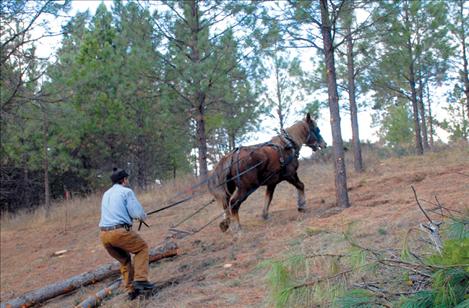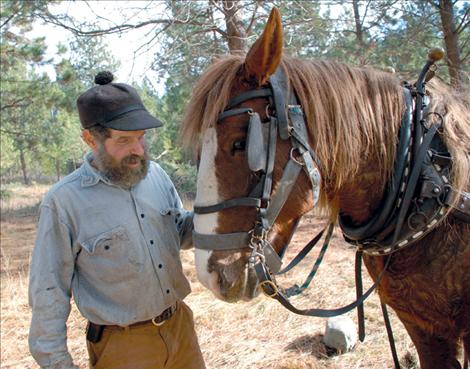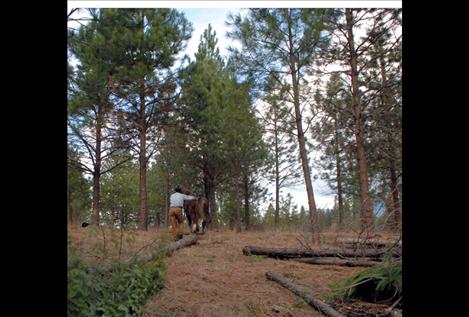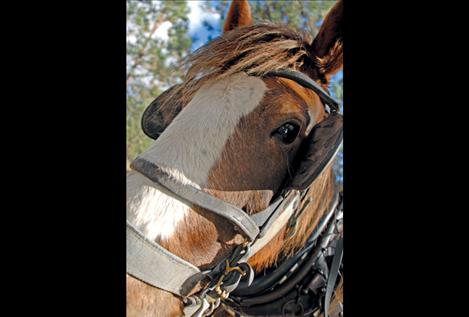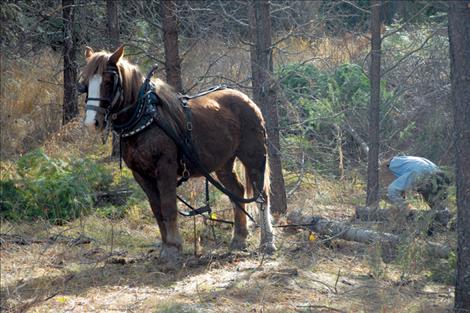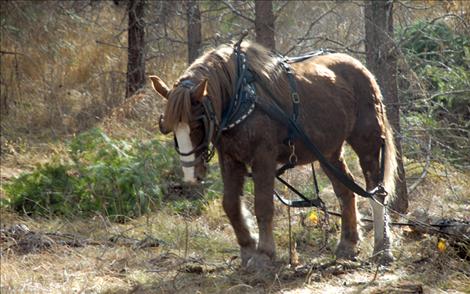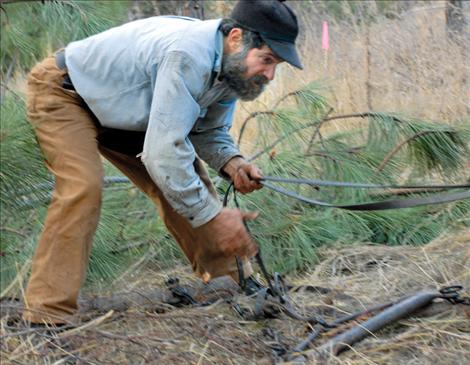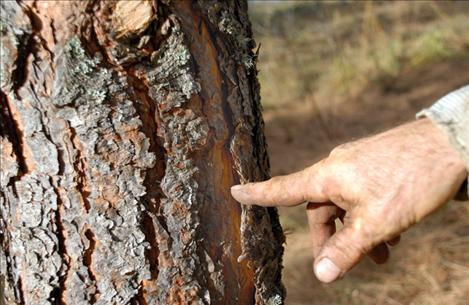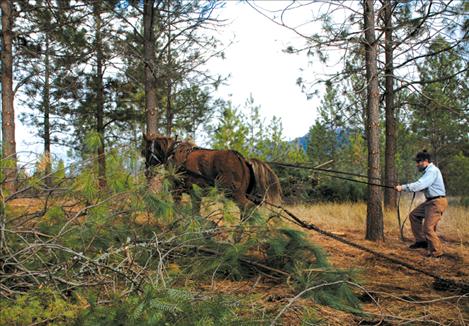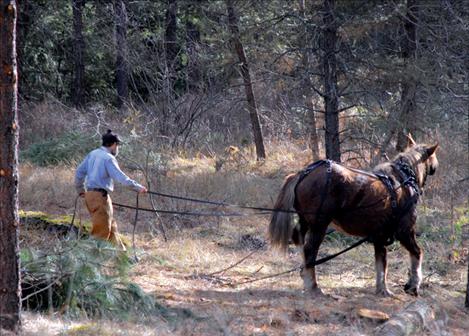Old time logging works for St. Ignatius man
Hey savvy news reader! Thanks for choosing local.
You are now reading
1 of 3 free articles.
Bess, a 10-year-old Belgian mare, charges up the hill, dragging a log to the burn pile, guided by David Sturman at the reins.
Sturman, 56, first hand-logged portions of the 44-acre piece of ground, then brought in just Bess, although he usually uses a team, to skid the logs and clear the brush away. “Skid” means hooking the log with chains to a singletree attached to his horse’s harness and pulling the tree with Bess-power.
It’s a beautification and forest health project in cooperation with the Department of Natural Resources and Conservation, and Sturman and his horses have two years to finish.
Sturman said the area was logged heavily in the 1930s.
“They took the cream and left the junk,” Sturman said.
He’s taking the worst of “the junk.”
At burn piles, he chops limbs off the downed trees and then skids the de-limbed logs up to the top of the hill. Before the end of burn season, he was burning as he went, but now the piles will wait until spring. He also limbs the live trees up as far as he can reach.
John and Dorothy Whiston from Iowa own the land and will retire here in about two years.
“People try to industrialize nature, and you can’t,” Sturman said.
Describing himself as a glorified gardener with a chain saw, Sturman said cleaning up the underbrush and fallen timber makes it harder for forest fires to start.
Also he said when he “opens up” a pine forest, the furrows, or ridges of bark on a tree, expand and the trees grow.
“In a pine forest that has not been altered by man, there is a mellow understory burn,” Sturman said. “If a fire comes through, it’s about 2-feet high. Smokey the Bear is just too good; there are not many fires.”
Sturman did not grow up around horses and logging; he was a suburbanite raised near Washington, D.C. Always interested in the outdoors, he graduated from the University of Maryland with a recreation degree so he could work for the National Park Service. When he graduated, Sturman got a job with the NPS, but then President Reagan was elected and it was, “Son, we don’t need you,” he explained.
He always liked horses and history, so historical parks led him to his next career move. Since historical parks usually need employees who are good with horses or a farrier, he learned to shoe horses.
He was a farrier for 15 years and has been self-employed since 1980.
One of his clients had a barn of 17 Clydesdale show horses and was always complaining about the farrier bill. After a big snowstorm knocked down area trees, Sturman suggested the owner should harness the big horses, skid in the fallen trees and make some money while giving the horses some work. The man declined, afraid he would mar his show horses; but the idea intrigued Sturman. He interned as a horse logger for about a year and went out on his own in 1993.
He lived on the job site in a wall tent and worked year-round, Sturman remembered, starting off on a shoestring.
One logging job was side-by-side with a mechanized logging crew of five guys. Sturman had his ponies, which drew laughter.
Although the mechanized crew loaded a truck a day, they had to pay for the loader, the truck, the skidder, plus fuel and worker’s compensation and split any money they made five ways. Sturman and his team sent out a load and a half per week, but he fed his workers hay and water, and all the money was his.
Also Sturman added, “I have never seen a John Deere skidder reproduce.”
He even courted Tracy, his wife, while he was logging; she liked the life and would come out to help on her days off.
Sturman stopped logging in 2004 when he and Tracy bought a 44-acre farm and began raising Katahdin sheep, a breed that has hair instead of wool and sheds each spring.
The couple has two children, a boy and a girl. The Sturman’s young son was seriously injured in a fire a few years ago and since then their son’s health has been their main priority.
Although there are other loggers in Montana and around the United States who use horses, there aren’t many. Working in the woods with Bess gives Sturman a chance to do a smaller logging project, keep up with farming chores and keep the tradition of horse logging alive.















